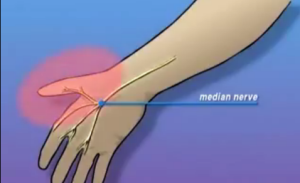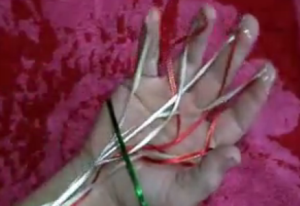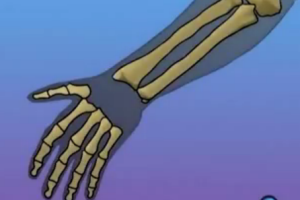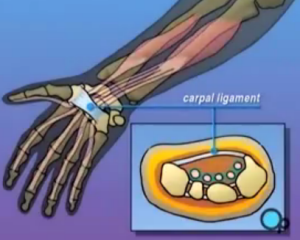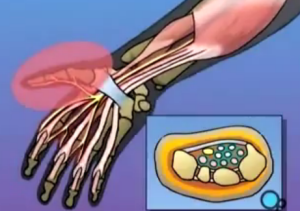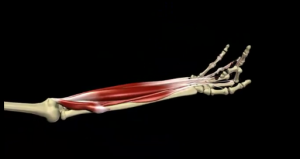What is Carpal Tunnel Syndrome ?
Carpal tunnel syndrome or CTS occurs when the median nerve in the carpal tunnel gets compressed, resulting in the manifestation of its symptoms. The syndrome causes numbness and a tingling sensation on the fingers and hands. Affected individuals often find that these sensations are present in both hands. CTS does not result in life-threatening situations, but it still warrants professional medical attention because it can damage the nerve, resulting in the complete loss of hand coordination and strength. It can also disrupt an individual’s professional and even personal life.
The symptoms of Carpal tunnel syndrome differ in every individual, so the treatment must be designed based on the specific needs of the patient. The treatment for the condition helps the patient manage the symptoms as well as improve his/her overall quality of life. Consultation with the doctor should not be delayed so as to make the treatment a whole lot easier and effective.
Causes of Carpal Tunnel Syndrome
As the name implies, carpal tunnel is a narrow passageway of nerves in the wrists. It is in this area that median nerve, which is responsible for the movement and feeling of the thumb, index, middle and part of the ring fingers, is located. When the median nerve gets compressed inside the tunnel, carpal tunnel syndrome results and the affected individual will a feel tingling sensation in the fingers and hands. There are plenty of reasons why the median nerve gets compressed, and these are:
- Fractured wrist
- Pregnancy
- Smoking
- Some medical problems like renal failure, PMS, diabetes, hypothyroidism, alcoholism, obesity and arthritis.
- Work that involves doing the same wrist and hand movements repeatedly.
Carpal Tunnel Syndrome Risk Factors
Anyone can suffer from CTS from time to time, but some have the condition more frequently and oftentimes, this is work-related. These people may be involved in repetitive hand and wrist motions at work such as typing, writing, painting, driving, sewing, operating vibrating hand tools and playing musical instruments. In addition, CTS is also related to pregnancy due to the presence of high body fluid during this period, thereby putting more pressure on the median nerves.
CTS had been found to affect 1 out of 20 people. It is notably prevalent among the female population at three times higher compared to men. Moreover, the syndrome is quite common among middle-aged people, between 31 and 60 years old. Studies also showed that CTS is more widespread among whites than blacks.
Carpal Tunnel Syndrome Symptoms
CTS is manifested in different ways, with only one hand affected in some people or both hands in others. Besides, some sufferers only experience mild symptoms while others have moderate to severe manifestations. Still, the most remarkable symptom of the disorder is pain on the palm and fingers. This feels like being pricked by needles. Tingling sensation and numbness is also commonly associated with weakness. The symptoms are noticeable at night, hence, disrupting sleep. Those with milder symptoms feel some pain in their hands that sometimes reach the shoulder. The fingers may likewise become stiff in the morning. On the other hand, reduced strength and numbness are felt by people who have moderate to severe symptoms. This makes it difficult to use the hands and fingers in holding objects and doing the usual daily routines like holding a spoon and fork or brushing the hair.
Chronic CTS should not be taken for granted because the median nerve may get damaged permanently. Besides, the inconveniences due to inability to do simple tasks like holding objects are extremely frustrating. Most of all, the syndrome is the leading cause of making frequent leave from work.
Carpal Tunnel Syndrome Diagnosis
Diagnosing the syndrome involves physical examination and a series of diagnostic tests. The physical examination will help the doctor determine the extent of damage caused by the syndrome based on the numbness, pain when the median nerve is tapped on the wrist and weakness of hand grip. Meanwhile, diagnostic tests are usually done to discount the presence of other health problems as the symptoms of CTS are quite similar to other conditions. These may include wrist x-ray, nerve conduction velocity and electromyography.
Carpal Tunnel Syndrome Treatment
Patients will greatly benefit from CTS treatment as it is targeted towards providing relief from the associated symptoms and prevent the disease from causing permanent damage to the nerves.
There are plenty of treatment options available. CTS can be treated with the home care approach by simply performing wrist splinting during nighttime. CTS exercises also work well, like median nerve gliding exercises and fist flexing exercises. Medications such as NSAIDs and corticosteroids may sometimes be used in treating the condition. Lastly, surgery might be needed for those with severe CTS.
The best way to prevent carpal tunnel syndrome is to use hand tools properly, take frequent stops from typing when pain is felt, and reduce repetitive hand and wrist movements if possible.
Carpal Tunnel Syndrome Pictures
